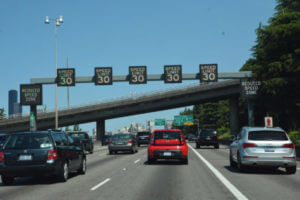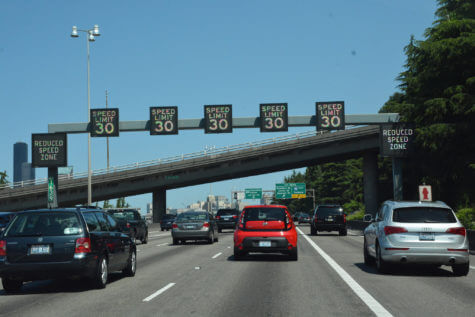COLUMBIA, Mo. — We’ve all dealt with gridlock-causing lane closures, detours, and work zones during what seems like never-ending construction on our highways, but there may be a way to make traffic move more smoothly. A new study finds that using variable speed limits in construction zones may lessen the amount of freeway congestion and even prevent crashes.
Researchers at the University of Missouri sought to tested the effectiveness of what’s called “variable advisory speed limit” (VASL) systems, which utilize electronic signs that can change the speed limit on a roadway depending upon things like severe weather or road conditions. The authors studied the use of variable speed limits on a particularly dangerous and congested stretch of I-270, a four-lane highway in St. Louis.

“The idea was to see if warning drivers of slower speeds ahead helped reduce crashes,” explains study author Praveen Edara, an associate professor of civil and environmental engineering, in a university release. “Where there is queueing, if drivers are not aware of the queue downstream, they don’t have enough time to hit the brakes to slow down or stop, thus, increasing the likelihood of a crash. Instead of posting a message asking them to slow down, the VASL system posts an advisory speed limit based on the actual downstream traffic speed, so drivers would know that if they’re driving 50 mph, they should slow to 30 mph downstream.”
In other words, Edara and his team found that if drivers aren’t aware of an upcoming slowdown, they won’t have enough time to slow to a safe speed. The VASL systems provide drivers with a recommended speed based on real-time traffic conditions farther along the highway, allowing drivers to reach safe speeds by the time they reach congested areas.
The results showed that VASL systems proved to be effective at relieving congestion as drivers entered work zones, reducing the average length of congestion by 39 to 53 percent. Using VASL systems caused maximum speed differences to fall by as much as 10 miles per hour, and the chances of rear-end collisions also fell by 30 percent. The research team also found a 20 percent decrease in lane-changing conflicts as well.
Interestingly, despite the reduction in traffic congestion, the VASL systems increased travel time by four to eight percent. Still, the safety improvements are worth it, says Edara.
The study was published last year in the Journal of Transportation Safety and Security.
